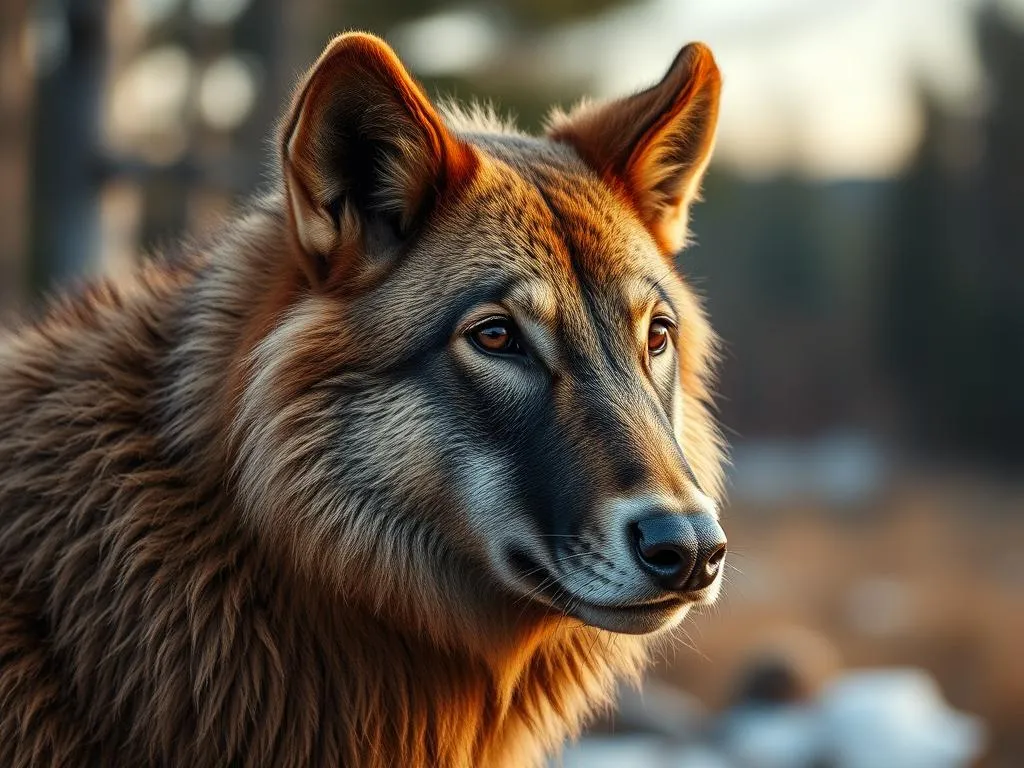
Introduction
Dog breeds have long captivated the hearts of humans, serving various purposes throughout history, from loyal companions to skilled workers. Understanding different dog breeds is crucial for potential dog owners, as each breed comes with its unique characteristics, needs, and temperament. In this article, we will focus on the Lapponian Herder, a fascinating breed that has garnered attention for its rich history and distinctive traits.
The purpose of this article is to provide in-depth information about various dog breeds, with a specific emphasis on the Lapponian Herder. By the end, you will have a comprehensive understanding of this unique breed, allowing you to make informed decisions should you consider welcoming one into your home.
Understanding Dog Breeds
What is a Dog Breed?
A dog breed is a specific group of domestic dogs with recognizable characteristics that set them apart from other breeds. These characteristics often include physical traits such as size, coat type, and color, as well as behavioral traits like temperament and energy levels. Breeds are typically created through selective breeding, where certain traits are emphasized to fulfill specific roles or functions.
The Importance of Dog Breeds
Dog breeds play an essential role in human society. They serve as companions, working partners, and protectors. Historically, different breeds have been developed to fulfill various functions based on their physical capabilities and temperamental traits. For instance, herding breeds, like the Lapponian Herder, were bred to assist in managing livestock, while others have been bred for hunting, guarding, or companionship.
Understanding breed differentiation is important for recognizing how each breed’s characteristics align with human needs and lifestyles. This knowledge can significantly influence a prospective owner’s choice when selecting a dog.
How Breeds Are Classified
Dog breeds can be classified in several ways, including by size, purpose, and geographic origin. Common breed groups include:
- Herding: Dogs bred to manage livestock.
- Working: Breeds developed for specific tasks such as guarding or rescue.
- Sporting: Dogs designed for hunting and retrieving.
- Hound: Breeds focused on hunting and tracking scents.
The Lapponian Herder falls within the herding group, showcasing its skills and traits that make it adept at managing livestock in its native regions.
The Lapponian Herder: An Overview
History and Origin
The Lapponian Herder has a rich history rooted in the Lapland region of northern Europe, particularly among the Sami people, who relied on these dogs to herd reindeer. This breed’s origins can be traced back centuries, adapting to the harsh Arctic climate and becoming an integral part of Sami culture. The Lapponian Herder is recognized not only for its herding abilities but also for its loyalty and companionship.
Physical Characteristics
The Lapponian Herder is a medium-sized dog with a well-proportioned body, typically weighing between 40 to 65 pounds and standing about 18 to 21 inches tall at the shoulder. They boast a thick, double coat that protects them from the cold, with colors ranging from black, brown, to gray, often featuring white markings.
Distinctive features of the breed include:
- Erect ears: Providing excellent hearing capability.
- Bushy tail: Often curled over the back when in motion.
These physical traits have evolved to ensure the breed can thrive in its natural environment.
Temperament and Behavior
The Lapponian Herder is known for its friendly and energetic disposition. This breed is intelligent, making it highly trainable, but it also requires mental and physical stimulation to stay happy. They are social dogs that thrive on interaction, both with their human families and other pets.
Key temperament traits include:
- Affectionate: Known for their strong bond with family members.
- Protective: Naturally wary of strangers, making them good watchdogs.
- Playful: Enjoys games and activities, especially those involving herding instincts.
Understanding these traits is essential for potential owners, as the Lapponian Herder excels in environments where they can engage in meaningful activities.
Care and Maintenance of the Lapponian Herder
Grooming Needs
The grooming needs of the Lapponian Herder are relatively moderate, thanks to their dense double coat. Regular grooming helps manage shedding, which occurs significantly during seasonal changes.
- Coat Care: Weekly brushing is recommended to prevent matting and to remove loose hair.
- Bathing Frequency: Bathe only when necessary, as over-bathing can strip the coat of its natural oils.
Essential grooming tools include a slicker brush and a de-shedding tool to keep their coat healthy and clean.
Exercise Requirements
Exercise is vital for the Lapponian Herder, as they are an active breed with high energy levels. Daily exercise routines should include:
- Long walks: At least one hour of walking or jogging daily.
- Herding activities: Engaging in herding trials or training sessions that tap into their natural instincts.
- Playtime: Activities like fetch or agility training that provide both physical and mental challenges.
By providing adequate exercise, owners will help prevent behavioral issues stemming from boredom or pent-up energy.
Health Considerations
Like all breeds, the Lapponian Herder is prone to certain health issues. Common health concerns may include hip dysplasia, eye problems, and skin issues. Regular veterinary check-ups are essential for early detection and management of any potential health problems. Keeping vaccinations up-to-date and maintaining a healthy diet will also contribute to the overall well-being of your dog.
Training the Lapponian Herder
Basic Obedience Training
Early training and socialization are crucial for the Lapponian Herder to develop into a well-rounded adult dog. Basic obedience training should focus on commands such as sit, stay, and recall, which are essential for their safety and integration into family life.
Recommended training techniques include:
- Positive reinforcement: Using treats and praise to encourage desired behaviors.
- Consistency: Establishing clear rules and routines for your dog to follow.
Socialization with other dogs and people from a young age will help the Lapponian Herder become more confident and well-adjusted.
Advanced Training and Activities
To keep a Lapponian Herder mentally stimulated and challenged, consider engaging them in advanced training activities. Suitable options include:
- Herding trials: Engaging in competitions that showcase their natural herding instincts.
- Agility courses: Providing an outlet for physical exercise and mental challenges.
Ongoing training not only strengthens the bond between dog and owner but also enhances the dog’s skills and behaviors, making them a joy to have around.
Choosing the Right Environment
Ideal Living Conditions
The Lapponian Herder thrives in environments where it has space to run and play. While they can adapt to urban settings, a rural or suburban home with a large yard is ideal. This breed enjoys outdoor activities and needs ample space to expend their energy.
Family Dynamics
When considering a Lapponian Herder, evaluate the compatibility with your family dynamics. This breed is generally good with children and other pets, but early socialization is key. Assessing your lifestyle and activity level is also important, as the Lapponian Herder requires an active family that can provide the necessary engagement and exercise.
Popularity of the Lapponian Herder
Current Trends in Dog Ownership
The Lapponian Herder has been gaining popularity among dog enthusiasts, particularly in Europe and North America. As a breed that combines herding capabilities with a friendly disposition, it appeals to families and individuals looking for an active and loyal companion.
Reasons for the breed’s appeal include:
- Versatility: They excel in various roles, from working dogs to beloved family pets.
- Adaptable nature: Their ability to adjust to different living conditions makes them suitable for diverse households.
Community and Support Networks
For prospective and current owners of the Lapponian Herder, joining breed clubs and organizations can provide valuable resources and support. These communities often offer training tips, health information, and social opportunities for dogs and their owners.
Connecting with other Lapponian Herder enthusiasts can enhance the experience of dog ownership, providing a network of support and knowledge sharing.
Conclusion
In summary, the Lapponian Herder is a remarkable breed with a rich history, unique characteristics, and a friendly disposition. Understanding the needs and traits of this breed is essential for anyone considering adding one to their family. From grooming and exercise to training and socialization, the Lapponian Herder requires dedicated care and attention.
As you embark on your journey into dog ownership, remember the importance of choosing a breed that aligns with your lifestyle and preferences. The Lapponian Herder may just be the perfect fit for those seeking a loyal, energetic, and intelligent companion.
By familiarizing yourself with various dog breeds, including the Lapponian Herder, you will be better equipped to make informed decisions, ensuring a fulfilling relationship between you and your future canine companion.









